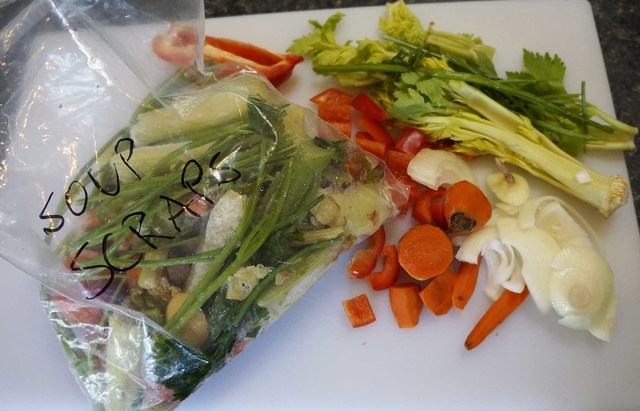Five easy steps to help you minimize food waste
It’s happening in refrigerators across America.
Lifeless lettuce, moldy muffins, squishy squash and festering fruit – all headed toward the trash.
I hate wasting food. Statistics show the typical American family wastes 25 percent of the food they purchase.
That’s a big chunk of our food budget but it also has a larger, global impact. About a third of all food produced in the world is lost or wasted according to the Food and Agriculture Organization. That’s approximately 1.3 billion tons annually.
If we could get that food to those who need it we’d go a long way toward ending world hunger. But there’s not enough space in this column to solve world hunger. So let’s start small.
My aim isn’t to make you feel guilty about throwing out a brown banana but to offer strategies for wasting less food, like making banana bread or a smoothie.
Shop wisely
The best way to eliminate food waste is to always make a weekly meal plan. Period.
Start by looking in the fridge and freezer to see what you have that needs to be used. Next check the grocery ads to see what’s on sale and build your plan around that.
Buy only what you need and when you get home put your groceries away promptly to maximize safe storage. Stock up only on items that have extended shelf life.
Make produce productive
Divide produce into three categories. 1: Spoils quickly (fresh spinach, salad greens, berries, and avocados). 2: Lasts three to five days (broccoli, bananas, soft skin squash, collards, tomatoes, melons). 3: Stays fresh a week or more (cauliflower, cabbage, potatoes, kale, carrots, onions, apples, citrus).
Use your weekly meal plan to make use of produce at its peak. You can preclude spoilage by purchasing frozen fruits and vegetables.
Know before you throw
Manufacturers employ the “Use By” and “Sell By” dates to determine peak quality, but they also use them to guarantee speedy turnover on grocery store shelves. Ka-ching.
Masses of perfectly good food are discarded because people think food automatically goes bad “poof” on that date. Untrue.
Trust your nose, particularly with dairy. Milk, cheese, yogurt, and sour cream can be perfectly fine past the sell by date. But remember what Mom says – “When in doubt, throw it out.”
Make friends with your freezer
You can freeze just about anything. Add marinades to meat before freezing so they marinate as they thaw. Use muffin tins and ice cube trays to freeze small portions. Fruit scraps can be frozen and saved for smoothies.
I keep a large zip top bag in my freezer to hold vegetable scraps that would otherwise go in the trash or compost. I use the scraps to add delicious flavor to homemade stocks and broths.
Love your leftovers
Try to cook only as much as your family will consume each meal. Alternatively, you can plan leftovers for lunch or an “encore” dinner.
Bonus points for multi-meal planning like roasting a chicken and making soup with the leftovers.
Frugal Foods contributed by Patti Diamond from Divas On A Dime – Where Frugal, Meets Fabulous! www.divasonadime.com Join us on Facebook at DivasOnADimeDotCom.

















